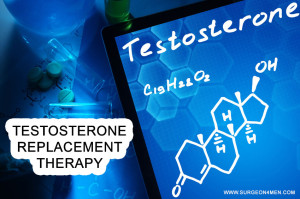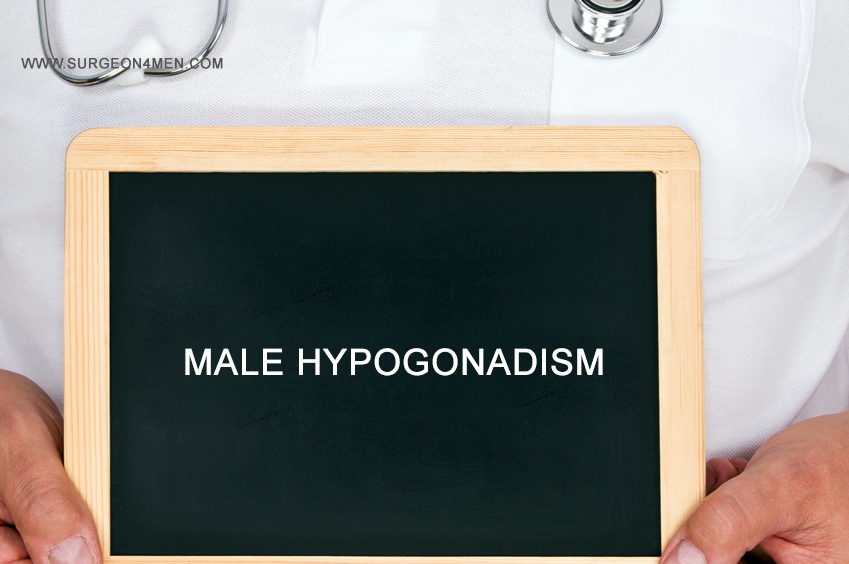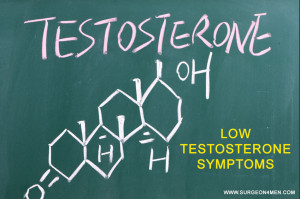Male hypogonadism
Male hypogonadism is a disorder that is characterized by deficiency of testosterone activity in the body. The primary hypogonadism is usually due to the deficiency of testosterone or due to desensitization of hormones at the level of receptors. Depending on the type of hypogonadism and age at onset, patients may experience a variety of symptoms.
Symptoms of Male Hypogonadism
The symptoms of male hypogonadism or testosterone deficiency can be classified into three phases; during fetal development or before or after puberty. Following are the most common symptoms:
- During Fetal development: Normal testosterone levels are required for the development of primary male characteristics; such as external genitalia and male phenotype/ appearance. If testosterone levels are deficient during intrauterine life due to genetic defects or androgen insensitivity syndrome; male fetus is born with either of the following; depending upon the severity of testosterone deficiency:
- Partial or incomplete development of male external genitals.
- Development of female genitals in the male.
- Undistinguishable genitals, either male or female (ambiguous genitals).
- Impaired secondary sexual characters; such as poor muscle mass, high pitched voice as that of females, lack of body hair or facial hair growth and underdevelopment of male genitals (testes and penis).
- Development of breast tissues (similar to females).
- At Adulthood:
Testosterone levels declines gradually with advancing age (especially after 30 years of age). Some common manifestations of male hypogonadism during adulthood are:
- Erectile dysfunction.
- Infertility or delayed conception. According to the data reported in the peer reviewed journal Fertility and Sterility (2), investigators suggested that 15% of all couples in the United States are infertile. In addition, male hypogonadism is solely responsible for infertility in 20% cases.
- Negative changes in musculature and body mass. Decrease in hair growth and loss of bone density are also reported.
- Breast development.
- Emotional and mental changes, such as decreased libido, fatigue, hot flashes and lack of concentration.
Causes of Male Hypogonadism
- Primary hypogonadism:
It is the failure of testes to produce testosterone; thereby causing primary male hypogonadism. Classic causes include:
- Klinefelter’s syndrome: Decreased testosterone production is due to abnormal genetic makeup of the individual. In this genetic aberration, individuals carry an extra X chromosome in addition to an ‘XY chromosome’. The genetic makeup in Klinefelter’s syndrome is an XXY.
- Cryptorchidism: If the testes (that are developed in the abdomen during intrauterine life) fails to descend in the scrotum, the condition is referred to as cryptorchidism. The Leydig and Sertoli cell dysfunction in cryptorchidism can lead to decreased or absent testosterone production.
- Mumps leading to Orchitis: Mumps (a viral illness of pediatric age) usually affects salivary glands as well as testes to cause damage; thereby affecting the testosterone production during adolescence and adulthood.
- Hemochromatosis: Increased iron causes pituitary and testicular failure to produce normal testosterone production.
- Cancer chemotherapy and radiotherapy: These therapies can affect the testosterone production and may lead to a permanent infertility.
- Secondary Hypogonadism:
It is the failure of pituitary gland and hypothalamus to induce testosterone production. Common causes include:
- Kallman syndrome: Abnormal development of hypothalamus can lead to hypogonadism in addition to color blindness and anosmia.
- Pituitary disorder: Any factor causing pituitary to function abnormally such as chemo or radiotherapy, tumor resection surgery of brain etc. can cause hypogonadism.
- Inflammation and HIV/AIDS: Infections damaging the hypothalamus or pituitary glands, can compromise testosterone synthesis by interfering with hormonal induction.
- Drugs: Opiates and other anti-pain medications can also cause male hypogonadism by pituitary dysfunction.
- Obesity and Aging: Metabolic derangements can cause gradual loss of testosterone production or affect testosterone metabolism.
- Concurrent illness: Emotional stress due to ongoing or chronic illness can also reduce testosterone production.
Complications of Male Hypogonadism
If the hypogonadism is left untreated, following complications may occur:
Fetal development:
- Baby is born with ambiguous or abnormal genitals.
Puberty:
- Delayed puberty.
- Decreased hair growth especially beard and pubic hairs.
- Underdeveloped penis and testes.
- Development of male breasts.
Adulthood:
- Erectile dysfunction and infertility.
- Decreased muscle mass, decreased hair growth, loss of bone density (osteoporosis).
- Breast development.
- Emotional and mental changes, such as decreased libido, fatigue, hot flashes and lack of concentration.
Treatment
Treatment modalities depends largely on the age of onset, severity of testosterone deficiency and cause of hypogonadism.
Treatment for adults:
- Hormonal replacement therapy: Testosterone replacement therapy can restore the sexual drive and secondary sexual characteristics.
- Assisted reproduction: Different techniques can be utilized to achieve normal conception as the infertility is primarily due to hypogonadism.
Treatment for boys:
- Hormonal replacement therapy: It is more functional in boys and helps in the development of secondary sexual characteristics as well as the penile and testicular growth. The replacement is done slowly and in a step wise approach to minimize the untoward effects.
Types of Testosterone replacement include:
- Intramuscular injections of testosterone, safe and efficacious, easy to administer and dose dependent effects.
- Testosterone Patch (androderm) applied to skin over the shoulders, thighs, upper arms and abdomen. Skin reactions prevented by changing the site every 7 days.
- Gel of testosterone, applied directly to skin (androgel), by an applicator in armpits (asciron) or by a pump in thighs (fortesta). Low skin reactions than gel.
- Gum and cheek sticking, applied in front of the upper incisors and lips, slowly absorbed in blood stream.
- Implantable pellets are testosterone filled pellets that are implanted under the skin for sustained release of hormone.
Oral therapy is not recommended because most oral formulations can cause liver damage. If appropriate doses are not administered, the risk of complications increases; such as cause heart attack, prostatic hyperplasia, prostatic cancer enlargement, enlarges breasts, sleep apnea and coagulation disorders.
References
1. Dohle, G. R., Arver, S., Bettocchi, C., Kliesch, S., Punab, M., & De Ronde, W. (2012). Guidelines on male hypogonadism. European Association of Urology.
2. Ahmad, A. E., Lao, M., Mechlin, C. W., Forman, M., Horvath, P. M., & McCullough, A. R. (2013). Prevalence of male hypogonadism in couples presenting to a reproductive endocrinology infertility clinic. Fertility and Sterility, 100(3), S211.
3. Zarotsky, V., Huang, M. Y., Carman, W., Morgentaler, A., Singhal, P. K., Coffin, D., & Jones, T. H. (2014). Systematic literature review of the epidemiology of nongenetic forms of hypogonadism in adult males. Journal of Hormones, 2014.


